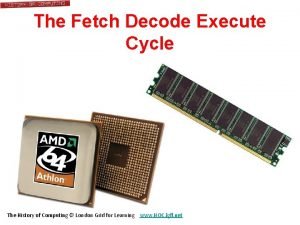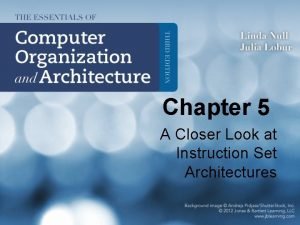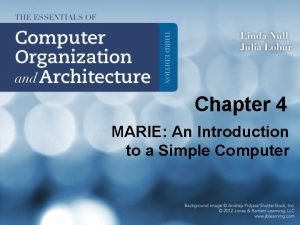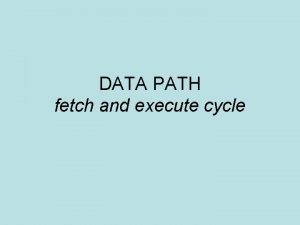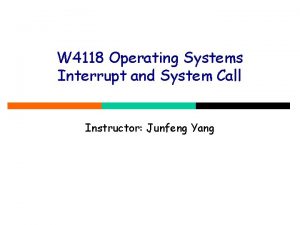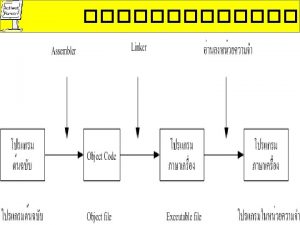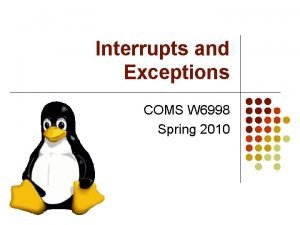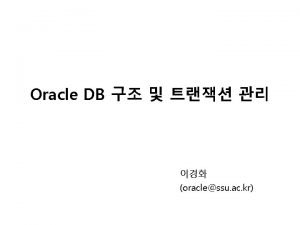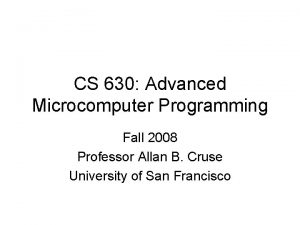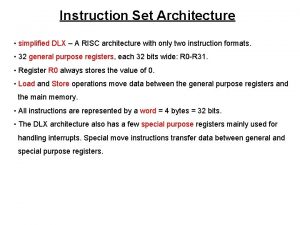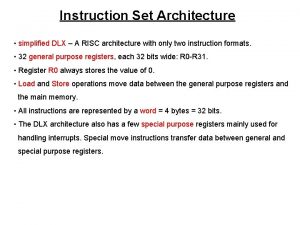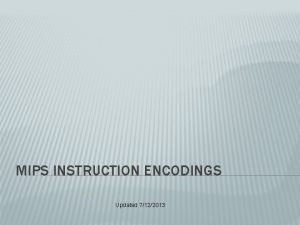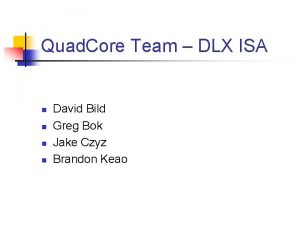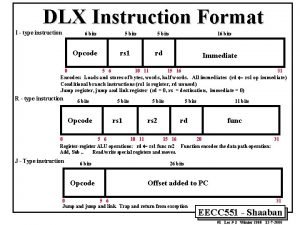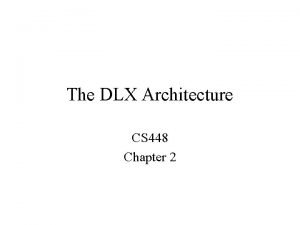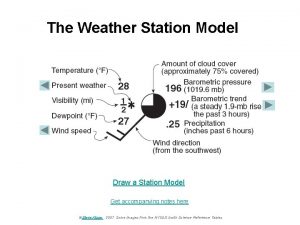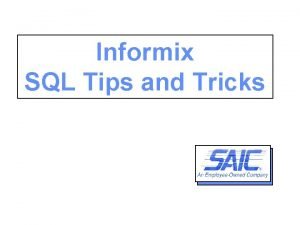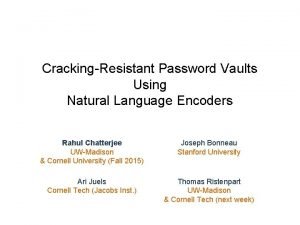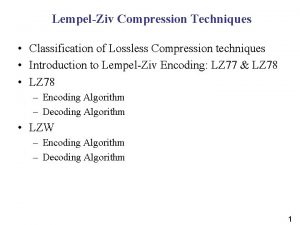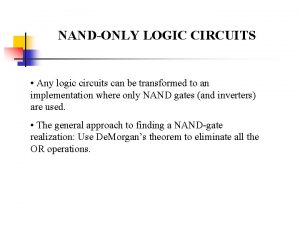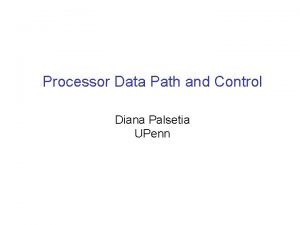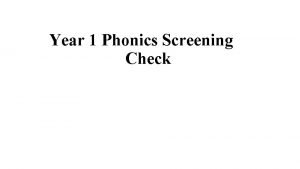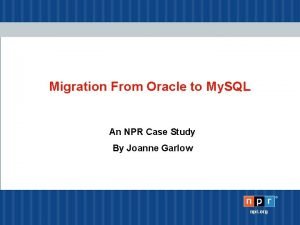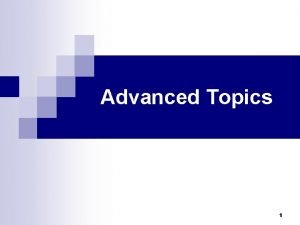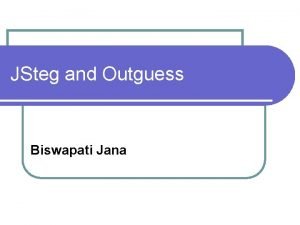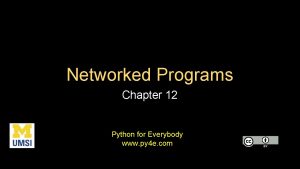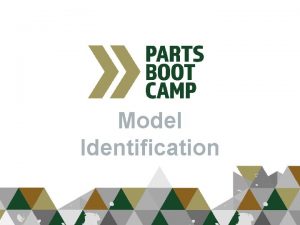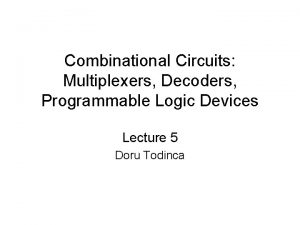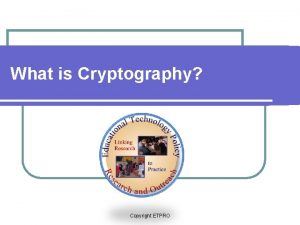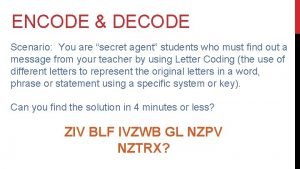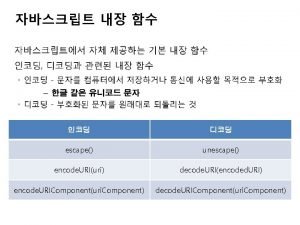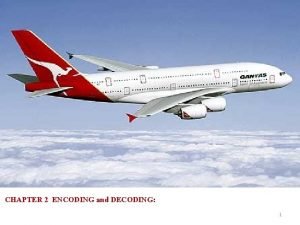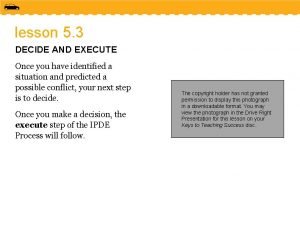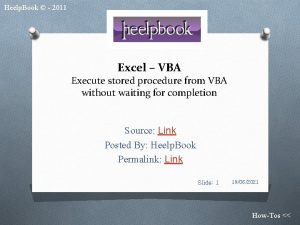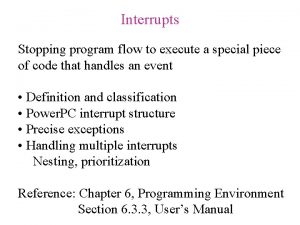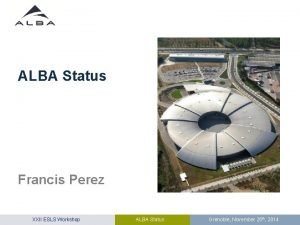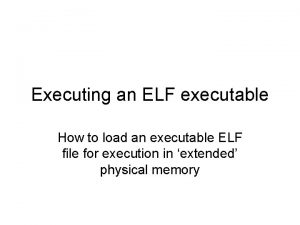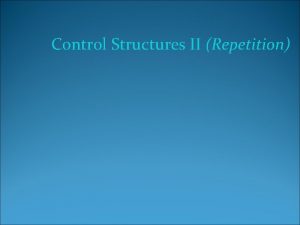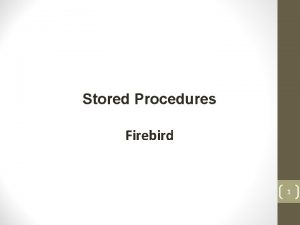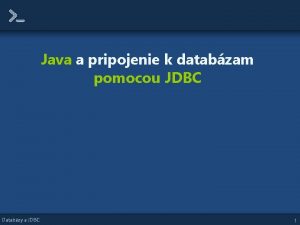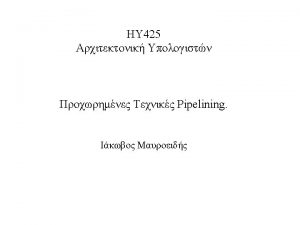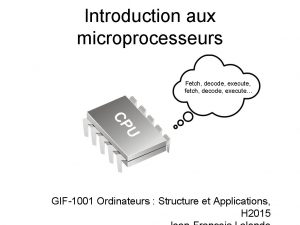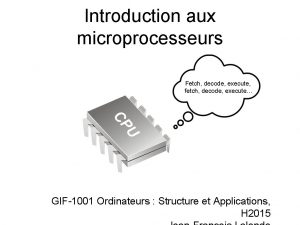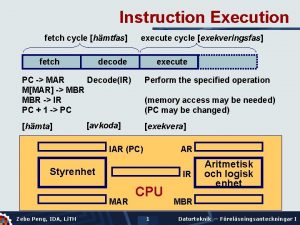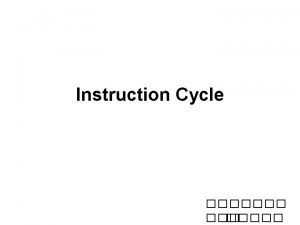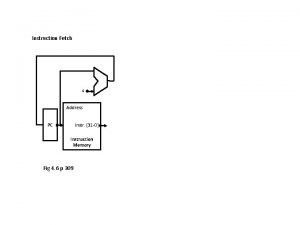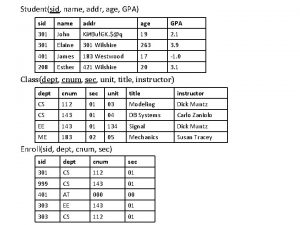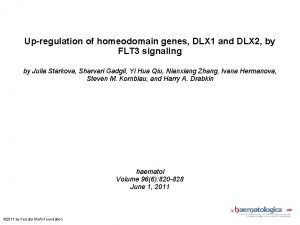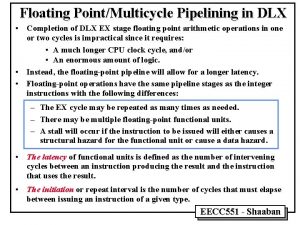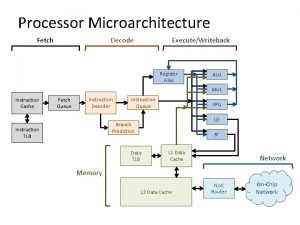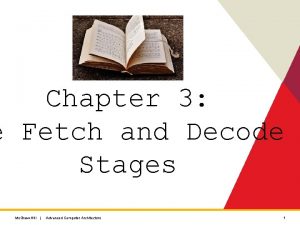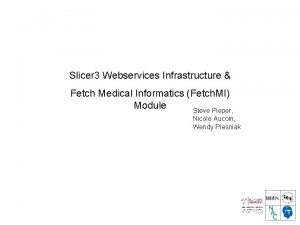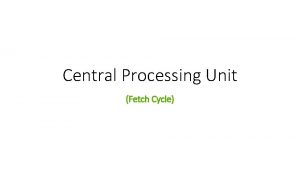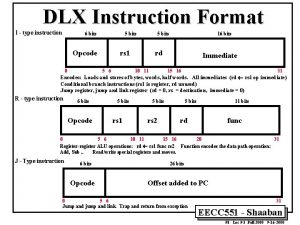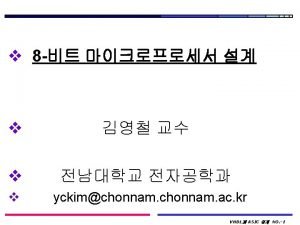DLX Instruction Fetch Execute Addr Calc Instr Decode
































![Tomasulo Loop Example while (R 1 > 0) { MEM[R 1] = MEM[R 1] Tomasulo Loop Example while (R 1 > 0) { MEM[R 1] = MEM[R 1]](https://slidetodoc.com/presentation_image_h2/3424775a21ff4557426edd5be85d5d49/image-33.jpg)






















- Slides: 55


Επεξεργαστής DLX Instruction Fetch Execute Addr. Calc Instr. Decode Reg. Fetch Memory Access Write Back MUX RD RD WB Data RD MUX Sign Imm Extend MEM/WB Μνήμη Δεδομένων EX/MEM ALU MUX RS 2 ID/EX Imm Opcode RS 1 Return PC (Addr + 8) Branch? Reg File IF/ID PC Μνήμη Adder Εντολών 4 Adder Next PC

Αρχιτεκτονική Scoreboard (CDC 6600) Registers FP Mult FP Divide FP Add Integer SCOREBOARD Functional Units FP Mult Memory

CDC 6600 Scoreboard • Speedup 1. 7 from compiler; 2. 5 by hand BUT slow memory (no cache) limits benefit • Limitations of 6600 scoreboard: – No forwarding hardware – Limited to instructions in basic block (small window) – Small number of functional units (structural hazards), especially integer/load store units – Do not issue on structural hazards – Wait for WAR hazards – Prevent WAW hazards

Another Dynamic Algorithm: Tomasulo Algorithm • IBM 360/91 3 χρόνια μετά από CDC 6600 (1966) • Στόχος: High Performance without special compilers • Διαφορές μεταξύ IBM 360 & CDC 6600 ISA – IBM has 4 FP registers vs. 8 in CDC 6600 – IBM has memory-register ops • Γιατί το μελετάμε? lead to Alpha 21264, HP 8000, MIPS 10000, Pentium II, Power. PC 604, …


Tomasulo Algorithm vs. Scoreboard • Control λογική & buffers κατανεμημένα με τα Function Units (FU) vs. κεντρικοποιημένα στο scoreboard; – FU buffers ονομάζονται “reservation stations”; έχουν τις τιμές των μεταβλητών προς εκτέλεση. • Οι Source Registers στις εντολές αντικαθιστόνται από τιμές ή pointers στα reservation stations(RS); ονομάζεται register renaming ; – αποφεύγει WAR, WAW hazards – Περισσότερα reservation stations από πραγματικούς registers (so can do optimizations compilers can’t) • Αποτελέσματα στα FU από τα RS, όχι μέσω του register file, πάνω από το Common Data Bus που κάνει broadcasts τα αποτελέσματα σε όλα τα FUs • Load and Stores treated as FUs with RSs as well • Integer instructions can go past branches, allowing FP ops beyond basic block in FP queue

Tomasulo Organization From Mem FP Op Queue FP Registers Load Buffers Load 1 Load 2 Load 3 Load 4 Load 5 Load 6 Store Buffers Add 1 Add 2 Add 3 Mult 1 Mult 2 FP adders Reservation Stations To Mem FP multipliers Common Data Bus (CDB)

Three Stages of Tomasulo Algorithm 1. Issue—πάρε εντολή από την FP Op ουρά Αν υπάρχει ελεύθερο reservation station (no structural hazard), issue instr & send operands (renames registers). 2. Execution—εκτέλεση στην αριθμητική μονάδα (EX) Όταν και οι τιμές των δύο μεταβλητών είναι έτοιμες άρχισε εκτέλεση. Αν δεν είναι έτοιμες, watch Common Data Bus for result 3. Write result—Τέλος εκτέλεσης (WB) Γράψε αποτέλεσμα στο Common Data Bus για όλες τις μονάδες που περιμένουν; mark reservation station available • • Συνηθισμένο data bus: data + destination (“go to” bus) Common data bus: data + source/res. station tag (“come from” bus). Ένας Master πολλοί Slaves – 64 bits of data + 4 bits of Functional Unit source address – Write if matches expected Functional Unit (produces result) – Does the broadcast

Reservation Station Components Reservation Station Busy: Δείχνει αν το reservation station είναι busy ή όχι. Op: Λειτουργία προς εκτέλεση στην μονάδα (e. g. , + or –) Vj, Vk: Τιμή του Source Register – Store buffers έχουν ένα πεδίο V field, τιμή προς αποθήκευση Qj, Qk: Reservation stations που παράγουν source registers (value to be written) – Note: No ready flags as in Scoreboard; Qj, Qk=0 => ready – Store buffers only have Qi for RS producing result Register result status Δείχνει ποιο functional unit θα γράψει κάθε register, αν υπάρχει κανένα. Blank when no pending instructions that will write that register.

Tomasulo Example

Tomasulo Example Cycle 1

Tomasulo Example Cycle 2 Note: Unlike 6600, can have multiple loads outstanding

Tomasulo Example Cycle 3 • Note: registers names are removed (“renamed”) in Reservation Stations; MULT issued vs. scoreboard • Load 1 completing

Tomasulo Example Cycle 4 • Load 2 completing

Tomasulo Example Cycle 5

Tomasulo Example Cycle 6 • Issue ADDD here vs. scoreboard?

Tomasulo Example Cycle 7 • Add 1 completing; what is waiting for it?

Tomasulo Example Cycle 8

Tomasulo Example Cycle 9

Tomasulo Example Cycle 10 • Add 2 completing; what is waiting for it?

Tomasulo Example Cycle 11 • Write result of ADDD here vs. scoreboard? • All quick instructions complete in this cycle!

Tomasulo Example Cycle 12

Tomasulo Example Cycle 13

Tomasulo Example Cycle 14

Tomasulo Example Cycle 15

Tomasulo Example Cycle 16

Faster than light computation (skip a couple of cycles)

Tomasulo Example Cycle 55

Tomasulo Example Cycle 56 • Mult 2 is completing; what is waiting for it?

Tomasulo Example Cycle 57 • Once again: In-order issue, out-of-order execution and completion.

Compare to Scoreboard Cycle 62 • Why take longer on scoreboard/6600? • Structural Hazards • Lack of forwarding
![Tomasulo Loop Example while R 1 0 MEMR 1 MEMR 1 Tomasulo Loop Example while (R 1 > 0) { MEM[R 1] = MEM[R 1]](https://slidetodoc.com/presentation_image_h2/3424775a21ff4557426edd5be85d5d49/image-33.jpg)
Tomasulo Loop Example while (R 1 > 0) { MEM[R 1] = MEM[R 1] * F 2; R 1 -= 8; } Loop: L. D F 0 0 R 1 MULT. D F 4 F 0 F 2 S. D F 4 0 R 1 SUBI R 1 #8 BNEZ R 1 Loop • Assume Multiply takes 4 clocks • Assume first load takes 8 clocks (cache miss), second load takes 1 clock (hit) and stores take 1 clock (hit) • To be clear, will show clocks for SUBI, BNEZ • Reality: integer instructions ahead

Loop Example

Loop Example Cycle 1

Loop Example Cycle 2

Loop Example Cycle 3 • Implicit renaming sets up “Data. Flow” graph

Loop Example Cycle 4 • Dispatching SUBI Instruction

Loop Example Cycle 5 • And, BNEZ instruction

Loop Example Cycle 6 • Notice that F 0 never sees Load from location 80

Loop Example Cycle 7 • Register file completely detached from computation • First and Second iteration completely overlapped

Loop Example Cycle 8

Loop Example Cycle 9 • Load 1 completing: who is waiting? • Note: Dispatching SUBI

Loop Example Cycle 10 • Load 2 completing: who is waiting? • Note: Dispatching BNEZ

Loop Example Cycle 11 • Next load in sequence

Loop Example Cycle 12 • Why not issue third multiply? Structural hazard

Loop Example Cycle 13

Loop Example Cycle 14 • Mult 1 completing. Who is waiting?

Loop Example Cycle 15 • Mult 2 completing. Who is waiting?

Loop Example Cycle 16

Loop Example Cycle 17

Loop Example Cycle 18

Why can Tomasulo overlap iterations of loops? • Register renaming – Multiple iterations use different physical destinations for registers (dynamic loop unrolling). • Reservation stations – Permit instruction issue to advance past integer control flow operations

Tomasulo v. Scoreboard (IBM 360/91 v. CDC 6600) Pipelined Functional Units Multiple Functional Units (6 load, 3 store, 3 +, 2 x/÷) (1 load/store, 1 + , 2 x, 1 ÷) window size: ≤ 14 instructions ≤ 5 instructions No issue on structural hazard same WAR: renaming avoids stall completion WAW: renaming avoids stall issue Broadcast results from FU Write/read registers Control: reservation stations central scoreboard

Tomasulo Drawbacks • Complexity – delays of 360/91, MIPS 10000, IBM 620? • Many associative stores (CDB) at high speed • Performance limited by Common Data Bus – Multiple CDBs => more FU logic for parallel assoc stores
 Fetch decode execute memory writeback
Fetch decode execute memory writeback Fetch decode execute cycle steps
Fetch decode execute cycle steps Fetch decode execute cycle steps
Fetch decode execute cycle steps Fetch decode execute cycle steps
Fetch decode execute cycle steps Execute cycle adalah
Execute cycle adalah Api vs system call
Api vs system call Instruction cycle steps
Instruction cycle steps Fetch execute cycle
Fetch execute cycle Failed to execute 'fetch' on 'window': failed to parse url
Failed to execute 'fetch' on 'window': failed to parse url Fetch execute cycle
Fetch execute cycle Simplified
Simplified Dlx instruction set
Dlx instruction set Mips instruction format
Mips instruction format Simplifier dlx
Simplifier dlx Dlx isa
Dlx isa I type instruction
I type instruction Dlx architecture
Dlx architecture Individualized instruction vs differentiated instruction
Individualized instruction vs differentiated instruction § 367 abgb
§ 367 abgb How to draw weather station model
How to draw weather station model Decode the words
Decode the words What letter comes next: o t t f f s s ?
What letter comes next: o t t f f s s ? Informix case statement
Informix case statement 4bit parallel adder
4bit parallel adder Encode decode
Encode decode Lzw compression
Lzw compression Decode logic
Decode logic Decode
Decode Decode it
Decode it Octal to binary encoder
Octal to binary encoder Npr
Npr Decode
Decode Jana discret
Jana discret Decode the words
Decode the words Nissan forklift engine identification
Nissan forklift engine identification Dot decode
Dot decode Decode the message
Decode the message Decode logic
Decode logic Decode
Decode Modèle transactionnel de la communication
Modèle transactionnel de la communication Secret agent letter
Secret agent letter Just for fun try to decode these words and phrases answers
Just for fun try to decode these words and phrases answers C'me code
C'me code Init.lua
Init.lua Unescape room
Unescape room Encode decode airport codes
Encode decode airport codes Lane positions
Lane positions Stack smashing
Stack smashing Excel vba execute stored procedure
Excel vba execute stored procedure Program flow control with interrupts
Program flow control with interrupts He sends romeo into exile.
He sends romeo into exile. Spare or execute alba
Spare or execute alba Elf executable
Elf executable A loop that continues to execute endlessly is called
A loop that continues to execute endlessly is called Firebird execute procedure
Firebird execute procedure Java tvorca
Java tvorca

